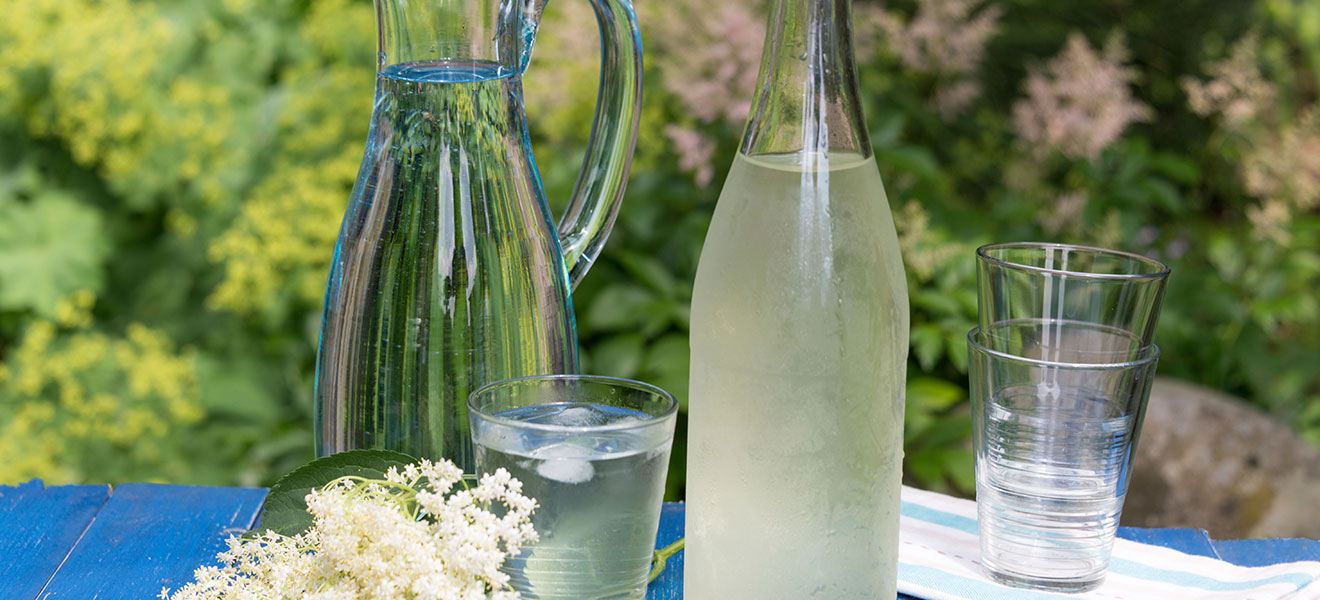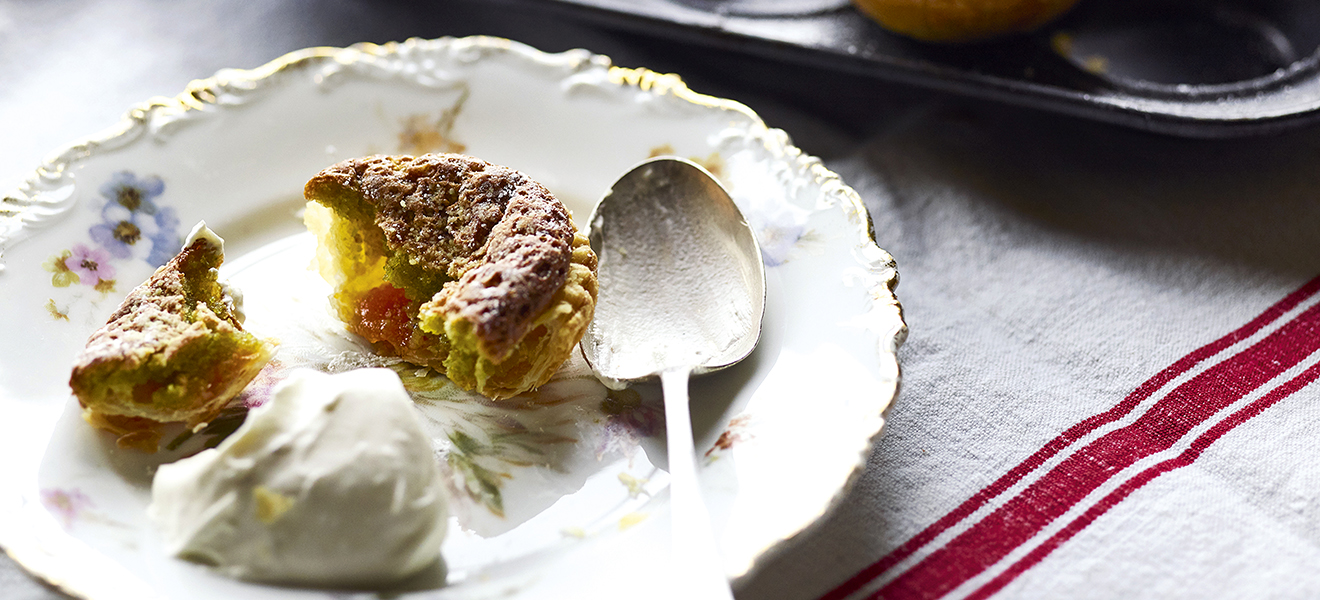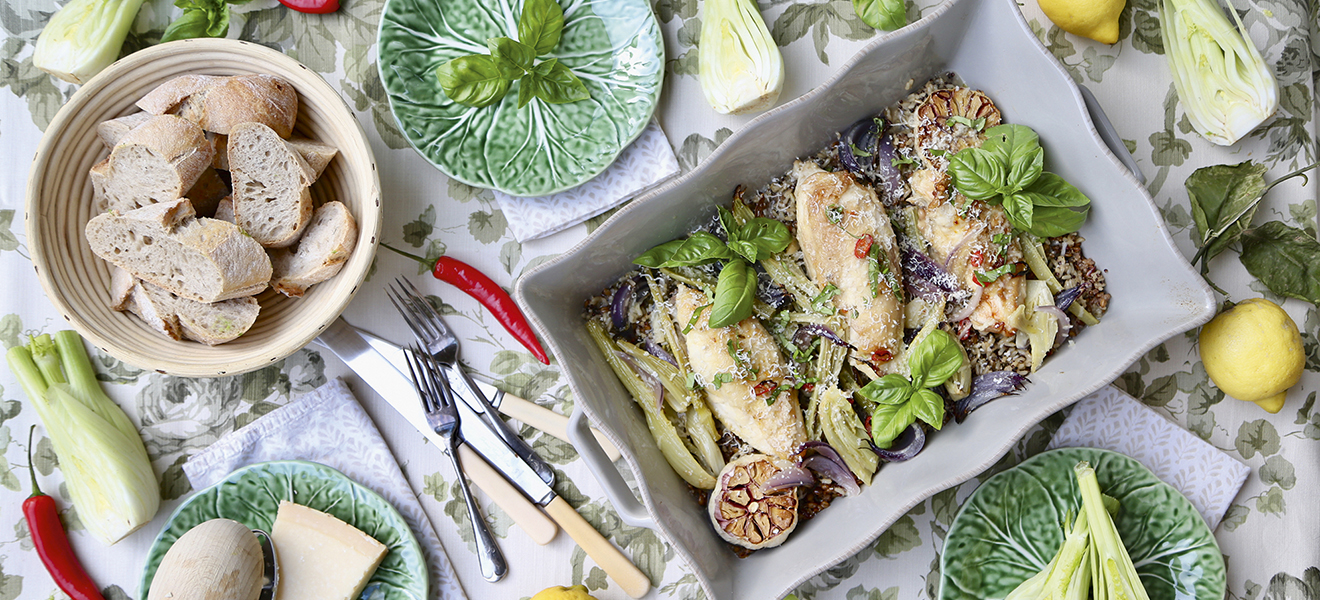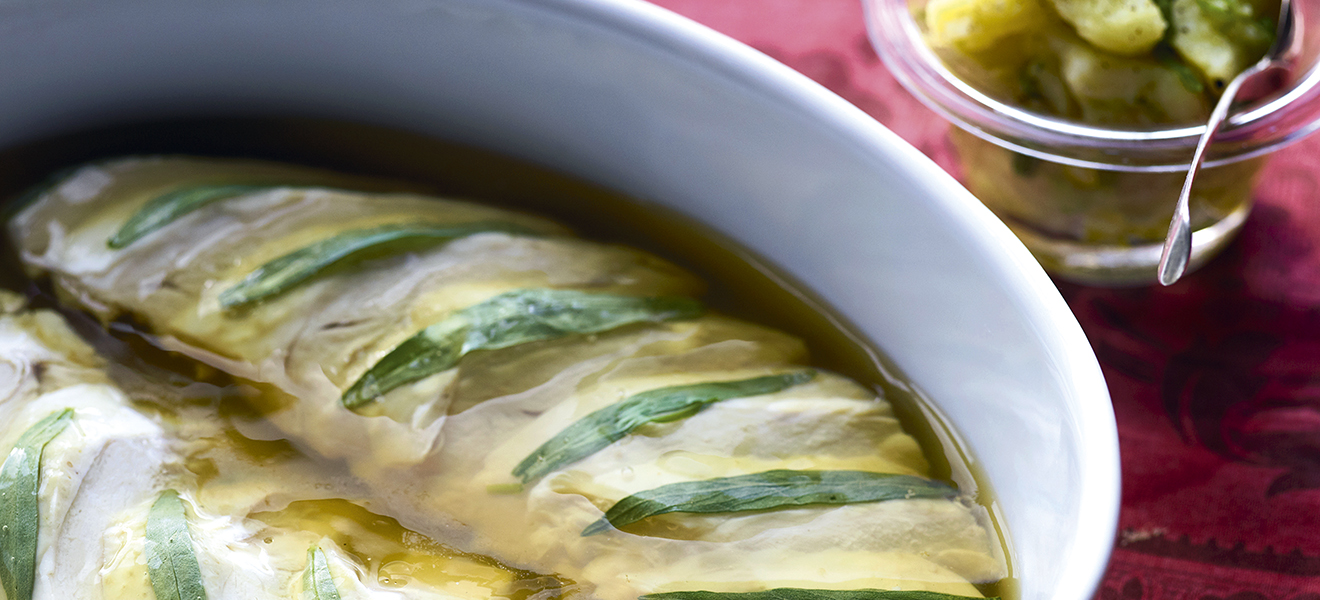Simon Hopkinson cooks red peppers
Cook red peppers perfectly, with Simon Hopkinson’s recipes on Saturday in countryside/food at 8am


Piperade
Serves 4, for a Sunday-evening supper, say, or as a first course
This is a favourite combination of three delicious ingredients: eggs, ham and peppers. It origin- ates in the very south-west of France, in the Basque region, with some of its influences quite clearly coming from just south of the border in Spain.
Ingredients
2 thin slices Spanish serrano ham, or Parma ham 2tbsp extra-virgin olive oil 1 large clove garlic, finely sliced 1 small red pepper (the long, pointy sort mentioned above would be perfect), grilled or roasted, peeled, de-seeded and finely chopped 8 very fresh eggs, beaten 2-3 small tomatoes, peeled, de-seeded and finely chopped 1 scant tbsp snipped chives A little salt and a generous pinch cayenne pepper 4 slices country bread, liberally brushed with olive oil and then grilled until golden
Method
Rub a film of olive oil over the surface of a large, non-stick frying pan. Place over a low flame and lay the slices of ham neatly in one layer. Allow to slowly become crisp on the underside, then flip them over. Once the ham has become almost translucent, and has released some of its fat, remove to a paper towel to drain and cool. Put to one side.
Sign up for the Country Life Newsletter
Exquisite houses, the beauty of Nature, and how to get the most from your life, straight to your inbox.
Add the olive oil to the same pan and add the sliced garlic. Cook it very gently until the edges are just beginning to gild, then immediately tip in the peppers. Stir for a few moments before pouring in the eggs. Quietly allow them to scramble and, when about half cooked, stir in the tomatoes, chives and seasoning.
Once cooked to your liking-I believe they should be soft and a touch loose in texture carefully pile onto the bread. Finally, break up the ham into small shards and crumble them over the eggs. Serve without delay.
Peperonata
Serves 4
Possibly the best loved of all Italian pepper dishes, introduced to me by Elizabeth David in her groundbreaking work Italian Food, published in 1954. The publication date itself remains astonishing-and is, by coincidence, the year I was born. This is how I make my peperonata.
Ingredients
4 large tomatoes, peeled and roughly chopped Salt and pepper 4-6tbsp extra-virgin olive oil 4 cloves garlic, thinly sliced 4 large onions, thinly sliced 4 large red peppers, or 6 long, pointy ones (as mentioned above), seeds and membranes removed, then thinly sliced
Method
Place the tomatoes in a stainless-steel pan with a little of the olive oil and lightly season. Place on a low heat and allow them to quietly stew for about 30 minutes, uncovered, until thickened and pulpy. Place a sieve over a bowl and tip in the reduced tomatoes. Using a ladle, force the tomatoes through the sieve to produce a smooth sauce. Put to one side.
Pour the remaining olive oil into a solid-based, wide, stainless-steel saucepan and place over a moderate heat. Add the garlic and, stirring occasionally, slowly allow it to faintly gild before tipping in the onions. Raise the heat slightly and, regularly stirring, cook the onions for about 20 minutes until they flop down, soften and are just beginning to colour.
Now, add the peppers, stir everything together and pop a lid on. Simmer ever so gently, stirring from time to time, until the peppers have wilted and soft-ened, for a further 20 minutes or so. Finally, stir in the tomato sauce and, without the lid, cook the mixture vigorously over a high heat for about a minute, so that the peper-onata is transformed into a rich and tasty stew of peppers, onions and tomatoes.
Decant into a suitable shallow serving dish and allow to cool to room temperature. Finally, trickle a little more olive oil over the surface and serve up with some crusty, rustic bread.
Simon Hopkinson is the founding chef and co-proprietor of Bibendum restaurant, London
Country Life is unlike any other magazine: the only glossy weekly on the newsstand and the only magazine that has been guest-edited by HRH The King not once, but twice. It is a celebration of modern rural life and all its diverse joys and pleasures — that was first published in Queen Victoria's Diamond Jubilee year. Our eclectic mixture of witty and informative content — from the most up-to-date property news and commentary and a coveted glimpse inside some of the UK's best houses and gardens, to gardening, the arts and interior design, written by experts in their field — still cannot be found in print or online, anywhere else.
-
 Everything you need to know about private jet travel and 10 rules to fly by
Everything you need to know about private jet travel and 10 rules to fly byDespite the monetary and environmental cost, the UK can now claim to be the private jet capital of Europe.
By Simon Mills
-
 'I'd willingly give a year of my life for a fortnight there': The green dream that is the garden of Derreen
'I'd willingly give a year of my life for a fortnight there': The green dream that is the garden of DerreenExotic woods, labyrinths of narrow, mossy paths and thousands of tree ferns make this an internationally important garden, writes Charles Quest-Ritson. Photographs by Jonathan Hession.
By Charles Quest-Ritson
-
 How to make raspberry-and-pistachio choux Paris-Brest, perfect with a glass of rosé
How to make raspberry-and-pistachio choux Paris-Brest, perfect with a glass of roséMelanie Johnson makes the most of juicy British berries with these sweet recipes.
By Melanie Johnson
-
 How to make elderflower cordial and wine
How to make elderflower cordial and wineThe English summer is thought to start when the elder blossoms and ends when the berries ripen. Country Life recommends some recipes for this versatile plant.
By Country Life
-
 Turning the humble potato salad into a thing of beauty, with a touch of salmon and pomegranate
Turning the humble potato salad into a thing of beauty, with a touch of salmon and pomegranatePotato salad is turned into something with a real dash of panache by our kitchen garden cook Melanie Johnson.
By Toby Keel
-
 Pan-fried sea bass with caper-and-anchovy potato cakes, samphire and cream
Pan-fried sea bass with caper-and-anchovy potato cakes, samphire and creamOur kitchen garden cook reveals a delicious recipe that makes good use of seasonal samphire.
By Melanie Johnson
-
 Summer pudding recipe: buttery pistachio tarts
Summer pudding recipe: buttery pistachio tartsThe very best pistachios might be costly, but they make a suitably sumptuous pudding.
By Simon Hopkinson
-
 Recipe: Roast-chicken with fennel and lemon, served with red Camargue rice
Recipe: Roast-chicken with fennel and lemon, served with red Camargue riceA delicious summer supper dish from our kitchen garden cook.
By Melanie Johnson
-
 Recipe: Blueberry-and-lemon tart with Italian meringue and confit lemons
Recipe: Blueberry-and-lemon tart with Italian meringue and confit lemonsOur kitchen cook reveals a showstopper of a pudding, perfect for summer.
By Melanie Johnson
-
 How to prepare a posh picnic
How to prepare a posh picnicA picnic spread should consist of delicate tarragon chicken, linen napkins and chilled rosé, rather than sandy sandwiches and boiled eggs.
By Simon Hopkinson